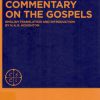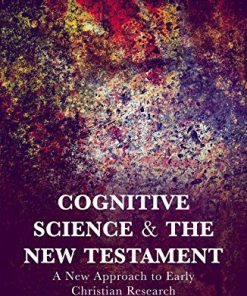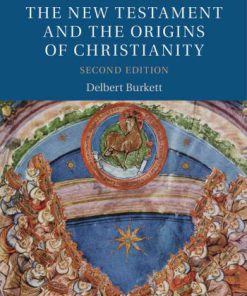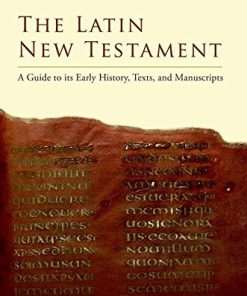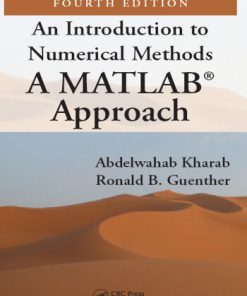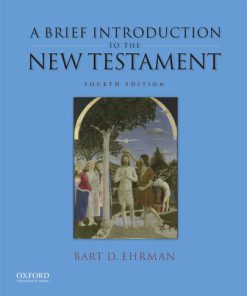An Introduction to the New Testament Contexts Methods Ministry Formation 2nd Edition by David Desilva 9780830874002 0830874003
$50.00 Original price was: $50.00.$25.00Current price is: $25.00.
An Introduction to the New Testament Contexts Methods Ministry Formation 2nd Edition by David Desilva – Ebook PDF Instant Download/Delivery:9780830874002,0830874003
Full download An Introduction to the New Testament Contexts Methods Ministry Formation 2nd Edition after payment
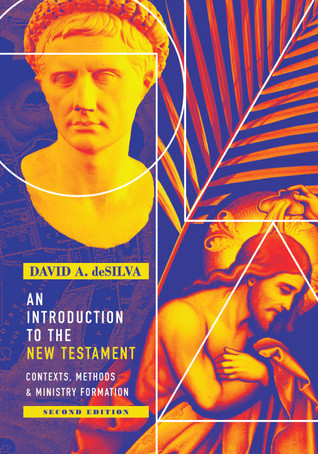
Product details:
ISBN 10:0830874003
ISBN 13:9780830874002
Author:David Desilva
This New Testament introduction is different.Many introductions zero in on the historical contexts in which the New Testament literature was written. This introduction goes further—to give particular attention to the social, cultural, and rhetorical contexts of the New Testament authors and their writings.Few introductions to the New Testament integrate instruction in exegetical and interpretive strategies with the customary considerations of authorship, dating, audience, and message. This introduction capitalizes on the opportunity, introducing students to a relevant facet of interpretation with each portion of New Testament literature.Rarely do introductions to the New Testament approach their task mindful of students preparing for ministry. This introduction is explicit in doing so, recognizing as it does that the New Testament itself—in its parts and as a whole—is a pastoral resource. Each chapter on the New Testament literature closes with a discussion of implications for ministry formation.These integrative features alone would distinguish this introduction from others. But in addition, its pages brim with maps, photos, points of interest, and aids to learning. Separate chapters explore the historical and cultural environment of the New Testament era, the nature of the Gospels and the quest for the historical Jesus, and the life of Paul.First published in 2004, David A. deSilva’s comprehensive and carefully crafted introduction to the New Testament has been long established as an authoritative textbook and resource for students. This beautiful, full-color second edition has been updated throughout with new scholarship and numerous images. It is the first choice for those convinced that a New Testament introduction should integrate scholarship and ministry.
An Introduction to the New Testament Contexts Methods Ministry Formation 2nd Table of contents:
1 The New Testament as Pastoral Response
Issues in the First-Century Church
Formation of a “New” Testament
2 The Environment of Early Christianity: Essential Landmarks
Prologue: Important Developments in the Second Temple Period
The Septuagint
The Old Testament Apocrypha
Key Players and Plots in the World of the Gospels and Their Readers
Torah, Temple, and Tradition: The Common Focal Points of Jews
The Shema
The “Eighteen” Benedictions
The Diversity Within Judaism
The Dead Sea Scrolls
Gnosticism, the Nag Hammadi Library, and the Hermetica
Greco-Roman Religion
Greco-Roman Philosophical Schools
Jews in the Greco-Roman World
Christians in the Greco-Roman World
3 The Cultural and Social World of the Early Church: Purity, Honor, Patronage, and Kinship
Purity and Pollution
Purity and Pollution in the Oedipus Plays of Sophocles
Honor and Shame
Patronage and Reciprocity
The Shape and Significance of Family in the Ancient World
4 The Four Gospels and the One Jesus: Critical Issues in the Study of the Gospels
What Is a Gospel?
From the Historical Jesus to the Canonical Gospels
The Building Blocks Behind the Gospels: Oral Tradition
The Composition and Relationship of the Gospels
The Contents of Q
The Fourfold Gospel Collection
From the Evangelists to Us: Handing Down the Gospel Texts
Searching for the Jesus of History
Criteria of Authenticity: A Summary
Just the Facts
5 The Gospel According to Mark: Following in the Way of the Cross
The Historical and Pastoral Context of Mark’s Gospel
Who Was the Evangelist’s Audience?
An Outline of Mark’s Gospel
Mark’s Message
John the Baptist
Exegetical Skill: Examining Literary Context
Cultural Awareness: Jewish Purity Codes and Mark’s Gospel
Mark and Ministry Formation
6 The Gospel According to Matthew: Following the Words of the Messiah
The Historical and Pastoral Context of Matthew’s Gospel
An Outline of Matthew’s Gospel
Matthew’s Use of Other Early Christian Resources
The Message of Matthew
Matthew’s Special Material (M)
The Continuity of the Ekklēsia and the Heritage of God’s People
Matthew as the Manifesto of a Jewish Messianic Sect
Exegetical Skill: Redaction Criticism
Matthew’s Formation of the Church’s Ethos and Discipline
Exegetical Skill: The Use of Comparative Material in New Testament Exegesis
Cultural Awareness: Honor Discourse in Matthew
Matthew and Ministry Formation
7 The Gospel According to Luke: Following the Heart of the Father
The Historical and Pastoral Context of Luke’s Gospel
Exegetical Skill: Textual Criticism
An Outline of Luke’s Gospel
Luke’s Use of Other Early Christian Resources
Luke’s Message
Luke’s Special Material (L)
Special Emphases in Luke
The Role of Women in Luke–Acts
Cultural Awareness: Luke and Patronage
Exegetical Skill: Interpreting Parables
Luke and Ministry Formation
8 The Acts of the Apostles: Following the Leading of the Spirit
The Genre of Acts: Acts and Ancient Historiography
The Speeches in Acts
The Purposes of Acts
The Kerygma—The Proclamation of the Gospel
The Structure of Acts
The Message of Acts
Luke’s Geography
An Outline of Acts
The Picture of the Early Christian Community
Early Christian Missionary Preaching
Acts and History: Paul as a Test Case
Exegetical Skill: Historical Criticism
The Gallio Inscription: Cornerstone of New Testament Chronology
Exegetical Skill: Rhetorical Criticism—Judicial Topics
Acts and Ministry Formation
9 The Gospel According to John: Following the One from Above
The Historical and Pastoral Setting of John’s Gospel
Exegetical Skill: Narrative Criticism
John’s Gospel and the Role of John the Baptist in God’s Plan
An Outline of John’s Gospel
The Resources Behind the Fourth Gospel
John’s Style
Stories and Sayings Common to John and the Synoptics
The Fourth Gospel and the Historical Jesus
John’s Message
Eschatology in the Fourth Gospel
The Sacraments in the Fourth Gospel
The Portrayal of Peter in John
Cultural Awareness: Kinship Language and the Interpretation of John’s Gospel
Exegetical Skill: Social-Scientific Criticism—Orientation to the Larger World
John and Ministry Formation
10 The Epistles of John: Painful Breaches of the Bond of Unity and Love
Introduction to the Johannine Epistles
The Structure of 1 John
The Message of the Johannine Epistles
1 John and the Letters of Ignatius on Love
Exegetical Skill: Exploring Ideological Texture in a Text
The Johannine Epistles and Ministry Formation
11 A Prologue to the Study of Paul’s Letters: From Defender of Israel to Apostle to the Nations
Challenges in the Study of Paul’s Life
Paul’s Pre-Christian Experience
The Relative Value of Acts and Paul’s Letters as Historical Sources
Paul’s Encounter with the Risen Christ
Paul’s Gospel and the Historical Jesus
The Ministry of the Apostle to the Gentiles
12 The Letter to the Galatians: Walking in Line with the Spirit
The Historical Setting of the Galatian Churches
The “New Perspective” on Paul and Early Judaism
Paul’s Response in Galatians
The “Faith of Jesus Christ” in Galatians
Exegetical Skill: Rhetorical Criticism—Appeals to Ethos
Paul, “Works,” and Entering God’s Kingdom
Galatians and Ministry Formation
13 The Thessalonian Correspondence: Living in the Light of the “Day”
The City of Thessalonica
The Formation of the Christian Community in Thessalonica
The Christians Paul Left Behind
Timothy’s Visit
Exegetical Skill: Epistolary Analysis
1 Thessalonians
2 Thessalonians
1 Thessalonians 2:1-12: Is Paul Defending Himself?
The Rise of the “Man of Lawlessness”
After Paul Wrote 2 Thessalonians
The Thessalonian Correspondence and Ministry Formation
14 The Corinthian Correspondence: Valuing Oneself and Others in the Lord
Historical Setting
The Message of 1 Corinthians
Paul’s Use of the Old Testament in 1 Corinthians
Reading Between the Letters
Exegetical Skill: Rhetorical Criticism—Deliberative, Epideictic, and Common Topics
Exegetical Skill: Rhetorical Criticism—The Functions of Parts of an Oration
The Message of 2 Corinthians
Paul’s Lists of Hardships
Paul and the Conventions of Acceptable Self-Praise
The Corinthian Letters and Ministry Formation
15 The Epistle to the Romans: The God of Jew and Gentile
The Setting and Purposes of Romans
Genre and Structure
The Literary Integrity of Romans
The Message of Romans
Faith in Romans: Whose Faith Is Involved?
Grace and Justification in Jewish Sources
The Enigma of Romans 7:7-25
The Law: Catalyst for Sin or Divine Remedy?
Exegetical Skill: Social-Scientific Criticism—The Analysis of Ritual
Romans and Ministry Formation
16 The Epistle to the Philippians: Unity in the Face of Adversity
The Historical Setting of Philippians
Genre and Purposes
Exegetical Skill: Discerning the Situation Behind a Text (“Mirror Reading”)
Paul’s Strange “Thank You” Note
Paul’s Strategy for Sustaining Christian Unity
Opponents of Paul at Philippi?
The Christ Hymn in Philippians 2:6-11
Persevering in the Face of Opposition
Philippians and Ministry Formation
17 The Epistle to Philemon: The Slave is our Brother
Historical Setting and Pastoral Purpose: The Story Behind Philemon
Paul’s Pastoral Strategy in Philemon
Slavery in the Greco-Roman World
Significance of the Letter
Exegetical Skill: Postcolonial Criticism and Cultural Studies
Philemon and Ministry Formation
Excursus: Pseudepigraphy and the New Testament Canon
18 The Epistles to the Christians in Colossae and Ephesus: Walking in the Light of Christ’s Victory
The City of Colossae and Its Christian Community
Opposition
Purpose and Message
Wisdom Christology in Colossians 1:15-20
Authorship
Provenance
Exegetical Skill: Word Studies and Lexical Analysis
The City of Ephesus
Authorship
Destination
Purpose
Provenance
The Message of Ephesians
Ephesians and Qumran
Ephesians, Colossians, and Ministry Formation
19 The Letters to Timothy and Titus: Trustworthy Management of God’s Household
The Historical Setting of the Pastoral Epistles
The Didache
The Message of the Pastoral Epistles
The Mastery of the Passions in Ethical Philosophy
Ignatius of Antioch on Chains and Execution
Exegetical Skill: Feminist Biblical Criticism
The Pastoral Epistles and Ministry Formation
20 The Epistle to the “Hebrews”: Living in Trust and Gratitude Toward God
The Situation Behind Hebrews
Exegetical Skill: Rhetorical Criticism—Appeals to the Emotions
Genre and Structure
The Pastoral Strategy of Hebrews
Exegetical Skill: The Analysis of Intertexture (1)
Contributions of Hebrews to Early Christology
Which Old Testament Did the Author of Hebrews Use?
Hebrews and Ministry Formation
21 The Epistle of James: Promoting Consistency of Belief and Behavior
“James” and His Readers
How Christian Is James?
Composition and Structure
An Outline of James
Genre and Purpose
James and the Jewish Wisdom Tradition
James and Paul
The Message of James
Exegetical Skill: Social-Scientific Criticism—Analyzing Worldview and Ethos
James and Ministry Formation
22 The First Letter of Peter: An Ethic for Resident Aliens Awaiting their Inheritance
The Addressees of 1 Peter
The Pastoral Problem Addressed by 1 Peter
Who Wrote 1 Peter, and When?
First Peter’s Pastoral Response and Rhetorical Strategy
Suffering as “Proving Ground”
Preaching to the Spirits in Prison
Hospitality and the Early Church
Exegetical Skill: Exploring Argumentative Texture
First Peter and Ministry Formation
23 Jude and 2 Peter: The Dangers of Deviant Disciples
The Letter of Jude
The Pesharim of Qumran
1 Enoch
Exegetical Skill: The Analysis of Intertexture (2)
Jude and Ministry Formation
The Second Letter of Peter
Epicureanism and the Teachers Opposed in 2 Peter
Testamentary Literature in Second Temple Judaism
Exegetical Skill: Redaction Analysis in Epistolary Literature
Second Peter and Ministry Formation
24 The Revelation of John: Living in the Light of God’s Triumph
Reading Revelation: The Question of Genre
Does Revelation Stem from a Genuine Visionary Experience?
The Setting of Revelation
Sources Behind and Stages in the Composition of Revelation
The Other Side of Revelation 13?
The Rhetoric of Revelation
Exegetical Skill: Identifying and Analyzing Repetitive Texture
The Message of Revelation: Redrawing Reality
Violence and Vengeance in Revelation
Revelation, the Future, and the End
Revelation and the Millennium
Revelation and Ministry Formation
Notes
Index of Modern Authors
Index of Subjects
Index of Ancient Texts
Scripture Index
Praise for An Introduction to the New Testament
People also search for An Introduction to the New Testament Contexts Methods Ministry Formation 2nd :
an introduction to the new testament
an introduction to the new testament raymond brown pdf
an introduction to the new testament pdf
introduction to the new testament quizlet
an introduction to the new testament david desilva
Tags:
David DesilvaTestament,Methods,Formation
You may also like…
Religion & Spirituality - Bible
Religion & Spirituality
Religion & Spirituality - Bible
The latin New Testament : a guide to its early history, texts, and manuscripts 1st Edition Houghton
Education Studies & Teaching - School Education & Teaching
Engineering
An introduction to numerical methods : a MATLAB® approach 4th Edition Guenther 9781138093072
Religion & Spirituality - Bible


